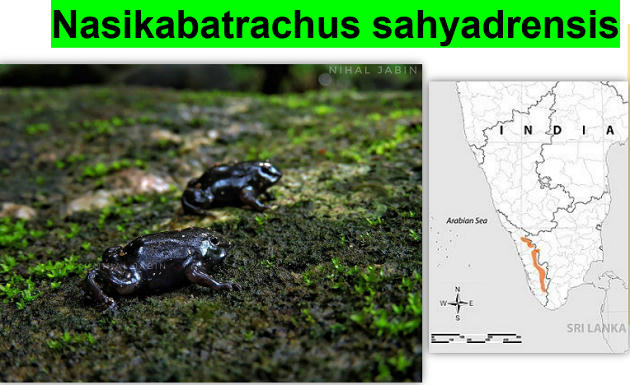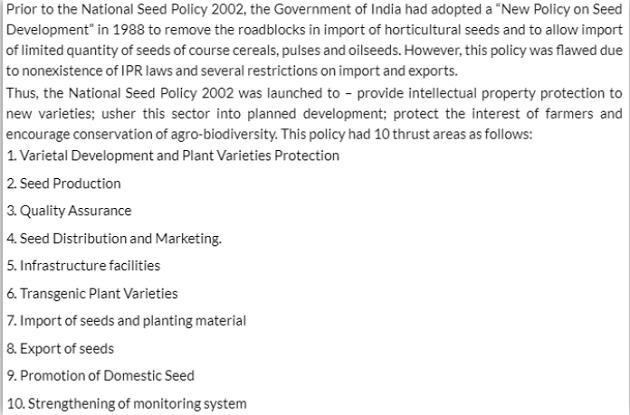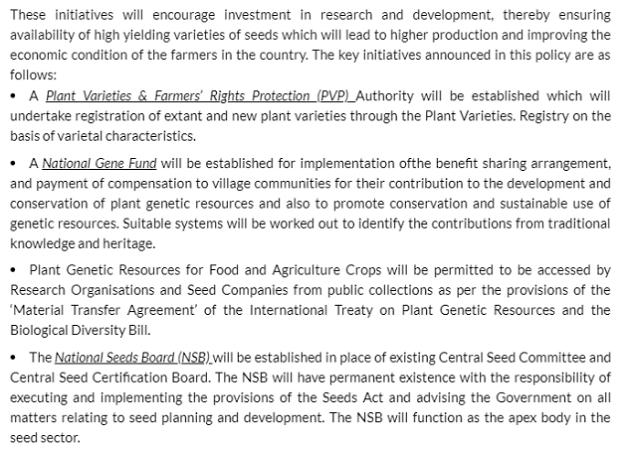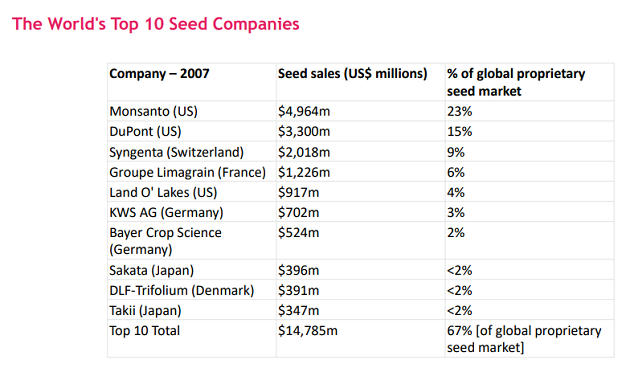Table of Contents
- Joint Comprehensive Plan of Action (JCPOA) is related to
- NATO’s Pacific plan
- India-Japan cooperation in Investment
- China’s new reform process in BRI
- NOTA
MCQ 2
- Wa Lone and Kyaw Soe Oo are pulitzer prize winner journalists in 2019
- They were arrested by Myanmar recently for not reporting about Rohingya issue
- Choose correct
(A) Only 1
(B) Only 2
(C) Both
(D) None
MCQ 3
- What is serotonin
- A Cancer drug
- A chemical used in IED blast
- A monoamine neurotransmitter.
- None
MCQ 4
- Pakkamalai Reserve Forests are located in Western ghats
- Grizzled Giant Squirrel, an IUCN Critically endangered animal is found here
- Choose correct
(A) Only 1
(B) Only 2
(C) Both
(D) None
MCQ 5
- Its body appears sturdy and swollen. It is relatively round in shape as compared to other flattened frogs.
- It is called ‘living fossil’ as it is believed that they have co-existed with dinosaurs almost 70 million years ago.
- Their conservation status is endangered as per International Union for Conservation of Nature (IUCN). What is true about Purple frog,
(A) 1 & 2
(B) 2 & 3
(C) 1 & 3
(D) All

- The purple frog (Nasikabatrachus sahyadrensis) is a frog species belonging to the family Sooglossidae.
- It can be found in the Western Ghats in India.
- Names in English that have been used for this species are purple frog, Indian purple frog, or pignose frog. Although the adult frog was formally described in October 2003, the taxon was recognized much earlier by its tadpole, which had been described in 1918 Nasikabatrachus sahyadrensis
MCQ 6
- ‘INS Vishal’ is recently commissioned in Indian navy
- It is the largest Warship in India
- Choose correct
(A) Only 1
(B) Only 2
(C) Both
(D) None
- INS Vishal, also known as Indigenous Aircraft Carrier 2 (IAC-2), is a planned aircraft carrier to be built by Cochin Shipyard Limited for the Indian Navy. It is intended to be the second aircraft carrier to be built in India after INS Vikrant (IAC-1), and the first supercarrier to be built in India. The proposed design of the second carrier class will be a new design, featuring significant changes from Vikrant, including an increase in displacement. An Electromagnetic Aircraft Launch System (EMALS) CATOBAR system is also under consideration.
- Its name Vishal means ‘giant’ in Sanskrit
- On 3 December 2018, Chief of the Naval Staff Sunil Lanba told media that the work on Vishal had moved ahead and the construction of the ship is expected to begin in 3 years.Initially, the carrier was expected to enter service by the 2020s, but the expected date of completion was later postponed to the 2030s.
- British newspaper Daily Mirror reported on 5 May 2019 that India was in talks with the United Kingdom to purchase the detailed plans for the HMS Queen Elizabeth (R08) to use as the basis of INS Vishal’s design
- MCA21 is an e-Governance initiative of Ministry of Company Affairs (MCA), Government of India that enables an easy and secure access of the MCA services to the corporate entities, professionals and citizens of India.
- Objective
- The MCA21 application is designed to fully automate all processes related to the proactive enforcement and compliance of the legal requirements under the Companies Act, 1956, New Companies Act, 2013 and Limited Liability Partnership Act, 2008. This will help the business community to meet their statutory obligations.
- Benefits
- The MCA21 application offers the following.
1.Enables the business community to register a company and file statutory documents quickly and easily.
2.Provides easy access of public documents
3.Helps faster and effective resolution of public grievances
4.Helps registration and verification of charges easily
5.Ensures proactive and effective compliance with relevant laws and corporate governance
6.Enables the MCA employees to deliver best of breed services
- In the Web domain, ‘MCA 21’ is an end-to-end holistic e-Governance project for compliance related services carried-out in the offices of Registrar of Companies (RoCs), Regional Directorate and the Ministry of Corporate Affairs office in New Delhi. The Project has brought a service centric approach in the delivery of public services and administration of Companies Act, specifically focusing on (i) starting a business, (ii) doing a business. The Project has been running successfully for 9 years and the Ministry has been taking continuous steps for improving the Government to Business (G2B) and Government to Citizen (G2C) services. The successful operations of the ‘MCA 21’ e-Governance Project has resulted in increase in statutory compliances and surge of revenue receipts
Taking tensions seriously
- A true strategic partnership between India and the U.S. remains elusive
- The U.S.’s decision to not extend Iran sanctions waivers, including the one provided to India, has notable implications for India-U.S. relations, given the importance of New Delhi’s energy relationship with Tehran. It comes on the heels of many other deleterious developments for bilateral ties including the U.S.’s decision to withdraw GSP benefits for Indian exports (in retaliation for Indian tariffs that the U.S. deemed to be prohibitively high) and the Trump administration’s discontent deepening over India’s policies on e-commerce, intellectual property rights and data localisation.
- These India-U.S. trade and economic tensions aren’t new; the non-security dimension of the relationship has long lagged behind the fast-growing defence side. Still, the complaints and perceived grievances, especially from the U.S., have seemingly intensified in the Trump era.
- Both sides have played down these differences and offered reassuring data points: India will scale up oil imports from other top producers; the GSP withdrawal will have minimal impact on India’s economy; the two capitals are working actively on high levels, most recently through the U.S.-India CEO Forum and the India-U.S. Commercial Dialogue, to ease tensions; and above all the strength of the bilateral relationship can easily withstand all these headaches.
- This is all true. But let’s be clear. A full-fledged strategic partnership, which both countries endorse, will be difficult to achieve amid such multiple and long-standing disconnects on the trade and economic side. Indeed, if bilateral ties are largely driven by technology transfers, arms sales, joint exercises, and foundational agreements on defence, this amounts to a deep but one-sided security relationship, and not a robust and multifaceted strategic partnership.
- To be sure, India-U.S. relations extend well beyond security. Recent joint statements have dwelt on the potential for cooperation on initiatives ranging from clean energy to innovation. And despite the problems, bilateral trade in goods and services has increased over the last decade. Still, so long as the non-security nuisances affect the bilateral relationship, the shift from a strong security relationship to a bonafide strategic partnership will be difficult. After all, one rarely hears complaints or concerns about trade and economic matters in the U.S.’s relations with the U.K., Australia, or Israel, some of its other strategic partners. The U.S. and India have long struggled to agree on what a strategic partnership should look like. Still, no matter how it is defined, any strategic partnership must be broad-based, with trust and cooperation present across a wide spectrum of issues and not just limited to close collaborations in the guns-and-bombs category. In this regard, a true strategic partnership remains, at least for now, elusive between India and the U.S.
A wake-up call on proprietary seeds
- How India can shift its agriculture from a high-yield ideal to a high-value one
- When the news broke that PepsiCo was suing small farmers in India for growing a potato variety that is used in its Lay’s chips, popular sympathies immediately went, of course, to the farmers. National and international pressure swiftly mounted, and in short order a humbled PepsiCo backtracked, announcing its withdrawal of the lawsuit. There was global schadenfreude at Goliath’s PR disaster and, in India, pride at being on the side of the righteous Davids.
- What should not be a source of pride, however, is the fact that so many small farmers are, like the ones targeted by PepsiCo, reliant, directly or indirectly, on proprietary seeds. Typically these seeds are grown in high input (fertilizer-pesticideirrigation) environments that, over time, erode local biodiversity. Between the expense of buying these seeds and inputs, and the loss of the skills and social relationships needed to do otherwise (through the saving and exchange of seeds of indigenous varieties), small-scale farming looks set to continue on its downward spiral of lower income, status and dignity. In 2011, PepsiCo introduced the FC5 variety of potato in India, but it was in 2016 that it registered the particular variety of seeds under the Protection of Plant Varieties and Farmers’ Rights Act, 2001, giving it the exclusive rights to grow the variety used in its Lay’s brands of chips.
- In 2011, PepsiCo introduced the FC5 variety of potato in India, but it was in 2016 that it registered the particular variety of seeds under the Protection of Plant Varieties and Farmers’ Rights Act, 2001, giving it the exclusive rights to grow the variety used in its Lay’s brands of chips.
- It’s time for a paradigm shift
- No one can blame farmers for thinking that proprietary seeds are better. Since the days of the Green Revolution, agricultural extension officers — the field representatives of agricultural modernity — have taught farmers to buy ever-higher-yielding seeds. Taking this science-and-industry-know-best stance on seed quality a little further, efforts have been ongoing, albeit unsuccessfully due to pressures from farmers and NGOs, to pass a new seed law in India permitting the sale of certified seeds only.
- In the current Indian law regulating intellectual property rights in seeds, the Plant Variety Protection law, this same official preference for the proprietary takes a different form. The law permits farmers not only to save and resow (multiply) seeds, but also to sell them to other farmers, no matter what the original source of the seeds is. This broad permission (called farmers’ privilege) is considered indispensable for so-called seed sovereignty, which has become synonymous with permitting farmers to save, sow, multiply and use proprietary seeds, as well as proprietary vegetative propagation materials such as what are used for the cultivation of potatoes. Despite the shift away from seed replacement to the right to save seeds, the emphasis remains on proprietary seeds that have narrow, uniform and non-variable genetic builds. Where farmers could be using genetically distinctive seeds adapted to local conditions and farming traditions, they are instead adapting local conditions and traditions in order to use genetically standardised seeds, to ruinous effect.
- It is time for a paradigm shift. To get a sense of what can be done, it may be useful to take a peep into recent regulatory efforts in Europe. The EU Regulation on Organic Production and Labelling of Organic Products, adopted in 2018, for the first time permits and encourages, inter alia, the use and marketing for organic agriculture, of “plant reproductive material of organic heterogenous material” without having to comply with most of the arduous registration and certification requirements under various EU laws. Heterogenous materials, unlike current proprietary seeds, need not be uniform or stable. Indeed, the regulation clearly acknowledges based on “Research in the Union on plant reproductive material that does not fulfil the variety definition… that there could be benefits of using such diverse material… to reduce the spread of diseases, to improve resilience and to increase biodiversity.” Accordingly, the regulation removes the legal bar on marketing of “heterogenous materials” and encourages its sale for organic agriculture, thus clearing the way to much more expansive use of indigenous varieties.
- Once the delegated acts under the EU regulation are formulated, they will support the creation of markets, especially markets and marketplaces facilitating trade of heterogenous seeds, including by small farmers who are currently the most active in maintaining and improving such seeds in situ. Indeed, multimillion-Euro research and innovation projects being invited and funded by the EU already aim to make this diversity a more integral part of farming in Europe. And here they are talking only of the diversity within Europe.
- Minimise harm, maximise gain
- How can a biodiversity-rich nation like India shift its agriculture from a high-yield ideal to a highvalue one, where the ‘values’ include striving to minimize environmental harm while maximising nutritional gains and farmer welfare?
- First, small farmers must be educated and encouraged with proper incentive structures, to engage with agriculture that conserves and improves traditional/desi (heterogenous) seeds in situ, rather than with “improved”, proprietary varieties. Currently, in the garb of protecting this diversity against biopiracy, India is preventing its effective use, management and monetization for the benefit of its farmers.
- Second, an immutable record-keeping system, perhaps blockchain or DLT, is needed to break the link between the profitable and the proprietary. Such a system would allow India and its rural communities to keep proper track of where and how their seeds/propagation materials and the genetic resources contained therein are being transferred and traded. It would also ensure, through smart-contract facilitated micropayments, that monetary returns come in from users and buyers of these seeds, from around the globe. These monetary returns would effectively incentivise continuous cultivation and improvement of indigenous seeds on the one hand, and ensure sustainable growth of agriculture and of rural communities on the other.
- Third, and as a key pre-requisite to the execution of the first two plans, India’s invaluable traditional ecological knowledge systems need to be revived and made a part of mainstream agricultural research, education and extension services.
- Know-how contained in ancient Indian treatises like the Vrikshayurveda and the Krishi Parashar falls within the scope of what international conventions such as the Convention on Biological Diversity refer to as ‘indigenous and traditional technologies’. The revival of these technologies is central to promoting sustainable ‘high value’ agriculture, not least because of the growing global demand for organic and Ayurvedic products.
- The withdrawal of the lawsuit by PepsiCo may be a welcome relief to several farmers who can neither afford to defend themselves in court, nor to abandon the cultivation of proprietary varieties. It must, however, be a wake-up call to the government and policymakers who need to do much more to secure sustainable rural societies, protect soil health and promote seed sovereignty for the economic development of Indian farmers and of the entire nation.



Circle of life
- Biodiversity assessments must be factored into all economic activity
- The overwhelming message from the global assessment report of the Intergovernmental Science-Policy Platform on Biodiversity and Ecosystem Services (IPBES) is that human beings have so rapaciously exploited nature, and that species belonging to a quarter of all studied animal and plant groups on earth are gravely threatened. If the world continues to pursue the current model of economic growth without factoring in environmental costs, one million species could go extinct, many in a matter of decades. Catastrophic erosion of ecosystems is being driven by unsustainable use of land and water, direct harvesting of species, climate change, pollution and release of alien plants and animals in new habitats. While ecosystem losses have accelerated over the past five decades universally, there is particular worry over the devastation occurring in tropical areas, which are endowed with greater biodiversity than others; only a quarter of the land worldwide now retains its ecological and evolutionary integrity, largely spared of human impact. Nature provides ecosystem services, but these are often not included in productivity estimates: they are vital for food production, for clean air and water, provision of fuel for millions, absorption of carbon in the atmosphere, and climate moderation. The result of such skewed policies, as the IPBES estimates, is that the global rate of species extinction is at least tens to hundreds of times higher today than the average rate over the past 10 million years, and it is accelerating alarmingly.
- Ecological economists have for years pointed to the extreme harm that humanity as a whole is courting by modifying terrestrial, marine and freshwater ecosystems to suit immediate needs, such as raising agricultural and food output and extracting materials that aid ever-increasing consumption. Expanding agriculture by cutting down forests has raised food volumes, and mining feeds many industries, but these have severely affected other functions such as water availability, pollination, maintenance of wild variants of domesticated plants and climate regulation. Losses from pollution are usually not factored into claims of economic progress made by countries, but as the IPBES assessment points out, marine plastic pollution has increased tenfold since 1980, affecting at least 267 species, including 86% of marine turtles, 44% of seabirds and 43% of marine mammals. At the same time, about 9% of 6,190 domesticated breeds of mammals used for food and agriculture had gone extinct by 2016, and another 1,000 may disappear permanently. Viewed against a shrinking base of wild varieties of farmed plants and animals, all countries have cause for alarm. They are rapidly emptying their genetic resource kit. Reversing course is a dire necessity to stave off disaster. This can be done by incorporating biodiversity impacts into all economic activity, recognizing that irreparably breaking the web of life will impoverish and endanger people everywhere.






















 WhatsApp
WhatsApp